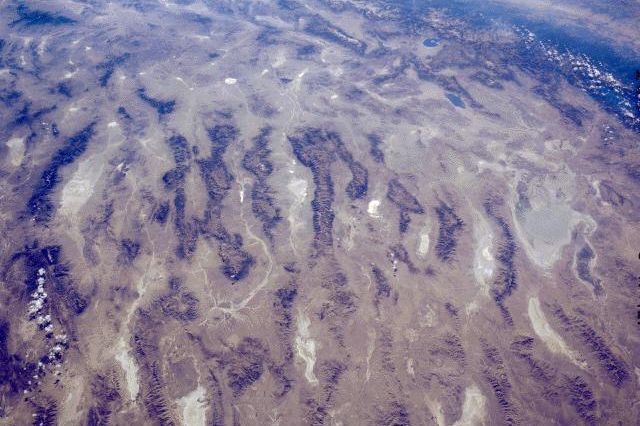
Jon Christensen is a veteran science journalist and an adjunct assistant professor in the Institute of the Environment and Sustainability at UCLA and the department of history. This op-ed appeared June 11 in the San Francisco Chronicle.
Artist Michael Heizer’s monumental sculpture “City” — a landscape of modern and ancient forms the size of the National Mall in Washington, D.C. — sits in a vast empty valley in the middle of the Nevada desert and at the center of a visionary proposal to establish a new national monument.
There could be no more fitting national monument to the New West and to the Basin and Range province — a uniquely American landscape which has yet to be recognized fully with a national monument or park — than this strange, audacious, sui generis site. Only in Nevada, indeed.
Heizer’s sculpture is worthy of monument status on its own, at once a memorial to nature and culture, industry and art, how people have shaped the land, and how the land and human signs on it endure. Situated in Garden Valley in southeastern Nevada and surrounded as it is by close to 900,000 acres of vast, seemingly untouched valleys, and abrupt, towering mountain ranges rising up to 6,000 feet above the valley floors, “City” and the basin and range landscape together are an inspiring tribute to humans’ encounter with the grandeur of nature in the American West.
Nature and artifice are one
I’ve wandered around “City,” marveling at how it frames this landscape, and how the basin and ranges frame the monument. It is as if nature and artifice, the built and natural environments, are one, while remaining completely different, yet interdependent and shaped by each other. It is a paradoxical tribute to all of the hybrid human and natural landscapes that people have made in the American West, home to some of the grandest nature in our “nature’s nation,” as well as some of the most amazing feats of human culture and engineering.
Now, some folks in Washington and Nevada are not going to like this, but a national monument here would also be a fitting tribute to Sen. Harry Reid, who is retiring in 2016, and has more than any other elected official represented and in many ways helped engineer the emergence of the New West. Growing up in the broken down mining town of Searchlight, Nevada, Reid lived through the demise of the Old West, dominated by exploitative extractive industries. And he came of age, politically, in an era of booms and busts defined by the broader global economy, tourism, gambling, the development of water and drought, an era in which mining and other extractive industries played smaller and smaller, if still significant roles, and conservation of land and water played a bigger and bigger role, in no small measure thanks to the senator.
Reid has racked up some of the most significant conservation victories in the American West in the past generation — in one of the nation’s most refractory states. He was instrumental in establishing Great Basin National Park, which preserves a mountain range, though not the basins that equally define the Basin and Range province. He pushed through the designation of more wilderness areas in the National Forests and public lands managed by the Bureau of Land Management in Nevada than were designated in all of the other states combined over the past 20 years.
Monument status
He brokered tough deals to change historical patterns of water management and irrigation on the Truckee River in northern Nevada, a signal deal preserving an endangered fish and restoring water to the Pyramid Lake Paiute Tribe. And he is working on an initiative to keep sage grouse, which inhabit vast swaths of the intermountain West’s sagebrush steppes, off the endangered species list.
Reid has achieved all of this against enormous odds. His opponents are legion in Nevada as well as in the U.S. Capitol. And they’ve already come out against giving national monument status to “City” and the surrounding basin and range landscape. The only way this will happen is through an executive order by President Obama, who is said to be considering it.
The Antiquities Act gives the president this extraordinary power. Since Teddy Roosevelt signed the law in 1906, presidents have used the act to protect landmarks, monuments, battlefields, structures, and natural and cultural landscapes that are representative of our history, our cultures and our nature.
We are rightly cautioned about using the word “unique,” but there is something truly, weirdly unique about the proposed Basin and Range National Monument. “City” is at once as modern as can be and already an antiquity. The surrounding landscape feels as old as the West and yet as full of possibility as a new day. Creating a national monument here would recognize these creative paradoxes of the American West and keep them alive in our national narrative for the future.





